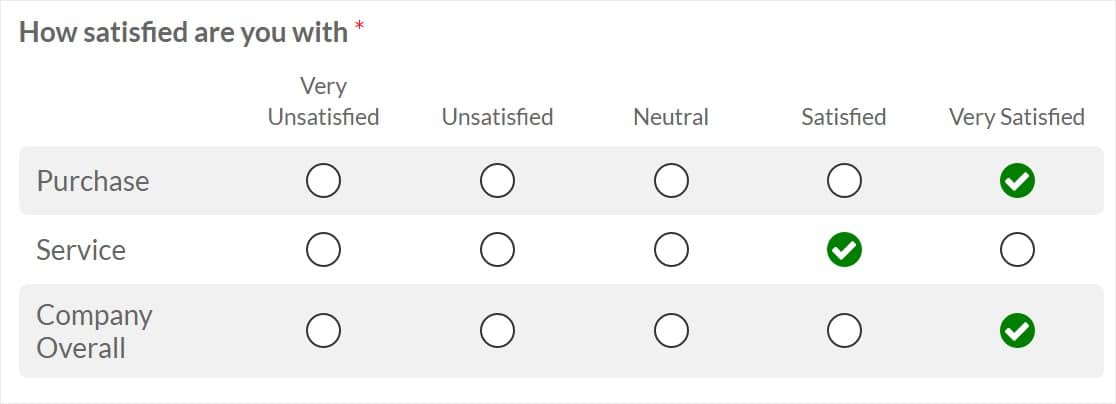

Use question logic so that only those who are unhappy skip to a question asking for improvement suggestions.

For example, let’s say you want to ask how much your patron enjoyed your restaurant, but you only want more details if they were unhappy with something.

If a question asks how quick your waiter was and the answers range from “extremely quick” to “moderately quick,” respondents who think the waiter was slow won’t know what answer to choose. Keep it inclusive. Scales should span the entire range of responses.This can be tricky when using word labels instead of numbers, so make sure you know what your words mean. Keep it continuous. Response options in a scale should be equally spaced from each other.Our methodologists recommend five scale points for a unipolar scale, and seven scale points if you need to use a bipolar scale. If you provide more than seven response choices, people are likely to start picking an answer randomly, which can make your data meaningless. How many options should you give people? Respondents have difficulty defining their point of view on a scale greater than seven. Keep it odd. Scales with an odd number of values will have a midpoint. What is it you want to find out Let’s say you’ve noticed some people love online shopping, while others wouldn’t do.Keep it labeled. Numbered scales that only use numbers instead of words as response options may give survey respondents trouble, since they might not know which end of the range is positive or negative.


 0 kommentar(er)
0 kommentar(er)
